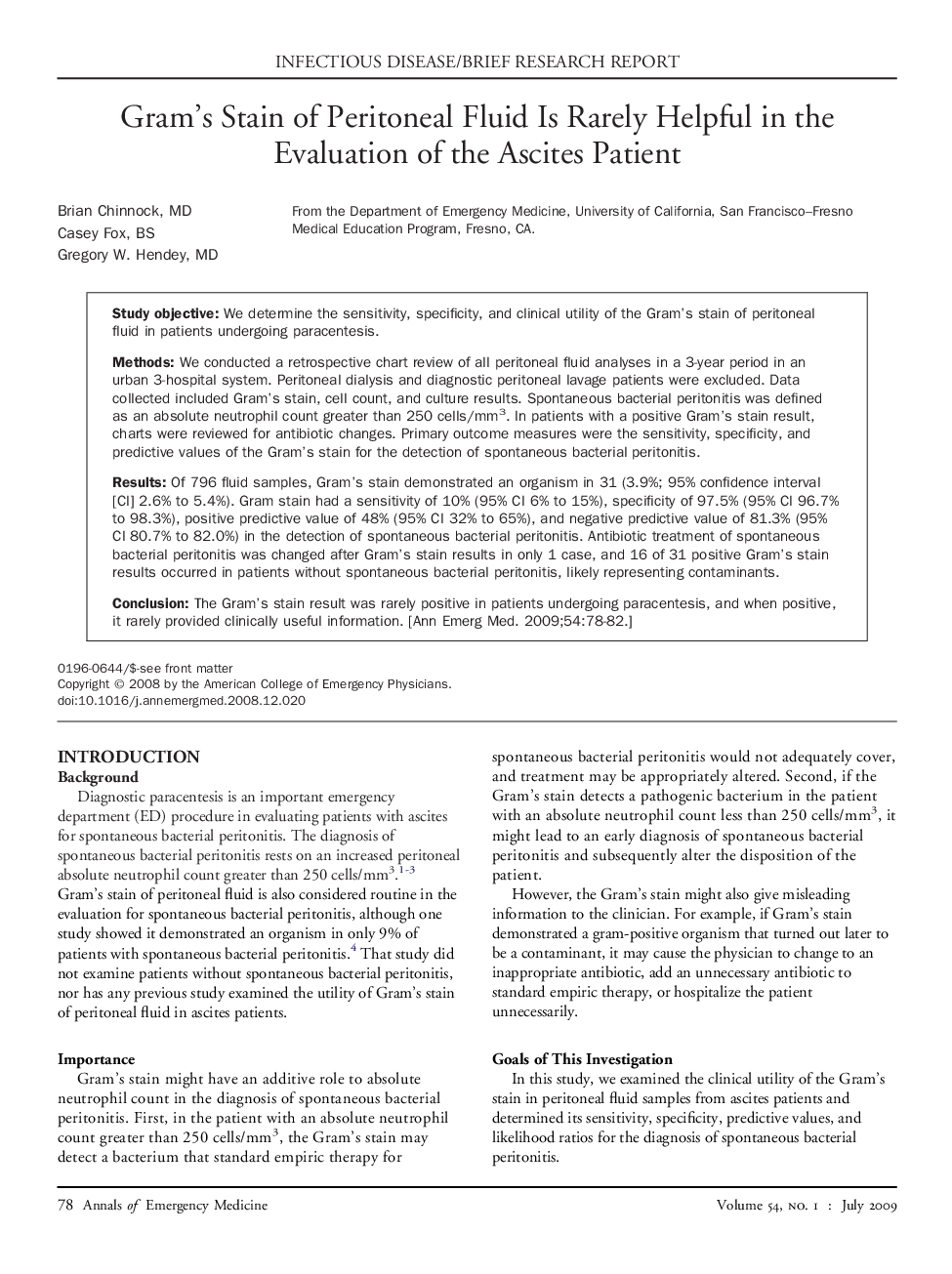| Article ID | Journal | Published Year | Pages | File Type |
|---|---|---|---|---|
| 3232391 | Annals of Emergency Medicine | 2009 | 5 Pages |
Study objectiveWe determine the sensitivity, specificity, and clinical utility of the Gram's stain of peritoneal fluid in patients undergoing paracentesis.MethodsWe conducted a retrospective chart review of all peritoneal fluid analyses in a 3-year period in an urban 3-hospital system. Peritoneal dialysis and diagnostic peritoneal lavage patients were excluded. Data collected included Gram's stain, cell count, and culture results. Spontaneous bacterial peritonitis was defined as an absolute neutrophil count greater than 250 cells/mm3. In patients with a positive Gram's stain result, charts were reviewed for antibiotic changes. Primary outcome measures were the sensitivity, specificity, and predictive values of the Gram's stain for the detection of spontaneous bacterial peritonitis.ResultsOf 796 fluid samples, Gram's stain demonstrated an organism in 31 (3.9%; 95% confidence interval [CI] 2.6% to 5.4%). Gram stain had a sensitivity of 10% (95% CI 6% to 15%), specificity of 97.5% (95% CI 96.7% to 98.3%), positive predictive value of 48% (95% CI 32% to 65%), and negative predictive value of 81.3% (95% CI 80.7% to 82.0%) in the detection of spontaneous bacterial peritonitis. Antibiotic treatment of spontaneous bacterial peritonitis was changed after Gram's stain results in only 1 case, and 16 of 31 positive Gram's stain results occurred in patients without spontaneous bacterial peritonitis, likely representing contaminants.ConclusionThe Gram's stain result was rarely positive in patients undergoing paracentesis, and when positive, it rarely provided clinically useful information.
